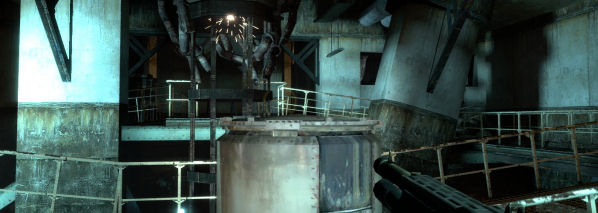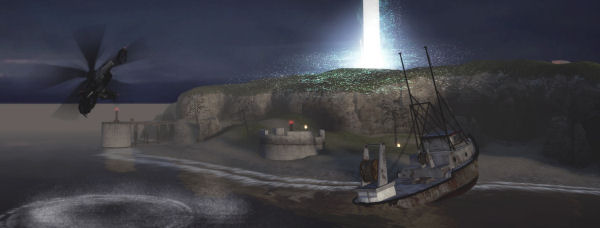RPS Advent Game-o-Calendar: December 8th
Quicksmart children. To your rooms, tickitysplit. It's jolly well time to open another page of our RPS-approved fairtrade advent calendar. In all your wildest dreams, what could be there?
A real life, actual, genuine, bone fide piece of chocolate! Thanks, Fairtrade. Om nom nom nom.
And for you?
It's Minerva: Metastasis!
Two Half-Life mods have stood out for me this year, City 7: Toronto Conflict and Minerva: Metastasis. It's the latter that makes our advent list by its scale, ambition, and most of all, accomplishment.
Playing through the three episodes that make up the first chapter of the eventual three-part Minerva series, what stands out most is a sense of progression. Lone creator Adam Foster clearly learned a hell of a lot as he developed the series, with each part learning from the last. This is never more evident than in the final third, which displays a fantastic knowledge of level design, and a high sense of instinct for the players' reactions. Alec wrote about it in October, here.
The mod has you playing a semi-anonymous character, unaware why you've been dumped on a small, heavily guarded island, with an incredibly deep mine shaft through its middle. Your guide is the eponymous Minerva - existing as nothing other than occaional messages in text on the screen. She's cruel, confusing, and disgusted with your existence, but clearly needs you on some level. It's an entertaining narration, and one that doesn't hold your hand (but in later sections will pop up with vague hints if you've stood still in confusion for too long). I do wonder if there could have been more continuity to her comments, if not any more coherence. In the third part her changes of mind don't really make sense.
What's mostly written about Minerva, but still deserves repeating, is the intelligence of architecture. The majority of the game takes place in small, confined spaces, but never, ever feels restrictive or claustrophobic. By building vertically as well as horizontally, Foster creates interesting, hyper-explorable spaces, and brilliantly, ones that don't require many load points. In fact, by keeping things tight, the sense of progress is often more tangible than when charging down long winding passages in regular FPS gaming. Being able to see where you just were, and where you're about to be, is a satisying and rewarding experience.
Foster spent some time with Valve, and took creative input on the final third, and the difference is apparent. While very enjoyable, an interesting feature of the first two episodes is their ability to highlight the difference between someone with a good grasp of design, and Valve's grasp of design. Puzzles often lack pointers, or the next direction to go in can be poorly flagged. Compare this to Valve games, with their endless playtesting, and the differences are stark. Which is why it's such a pleasure in part three to see those influences appearing. Very simple, almost unconscious hints appear. A glowing healthpack out of reach to indicate you need to be solving a route there. Falling objects and wobbling platforms to suggest that you might be able to break some more in order to progress. These are gentle, unobvious clues that you pick up on without thinking about them.
Minerva, as is often the case with mods, is much more of a shooter than Valve's Half-Life games. A temptation of modding appears to be to fill levels with dozens and dozens of fun baddies to kill, and this is often no bad thing. But it does perhaps betray a lack of confidence in the levels themselves, that without constant gunplay the situations and challenges might not be interesting alone. Refreshingly, the gravity gun is not present, but this does of course shift focus onto bullets over object manipulation, and emphasise the run and gunning. I'm not sure if this is a criticism, or just an observation. I'm sure I'll make my mind up soon.
That Minerva is free is really rather brilliant. This is a remarkably professional game, with some stunning set-pieces, and put together, as long as a Valve episode. It's the sort of thing you certainly wouldn't have objected paying for, and yet, you don't need to. Get the whole bundle here (all sewn together so the episodes are seamless (er, can you have no seam if it's sewn?)), and read our interview with Adam Foster here.




